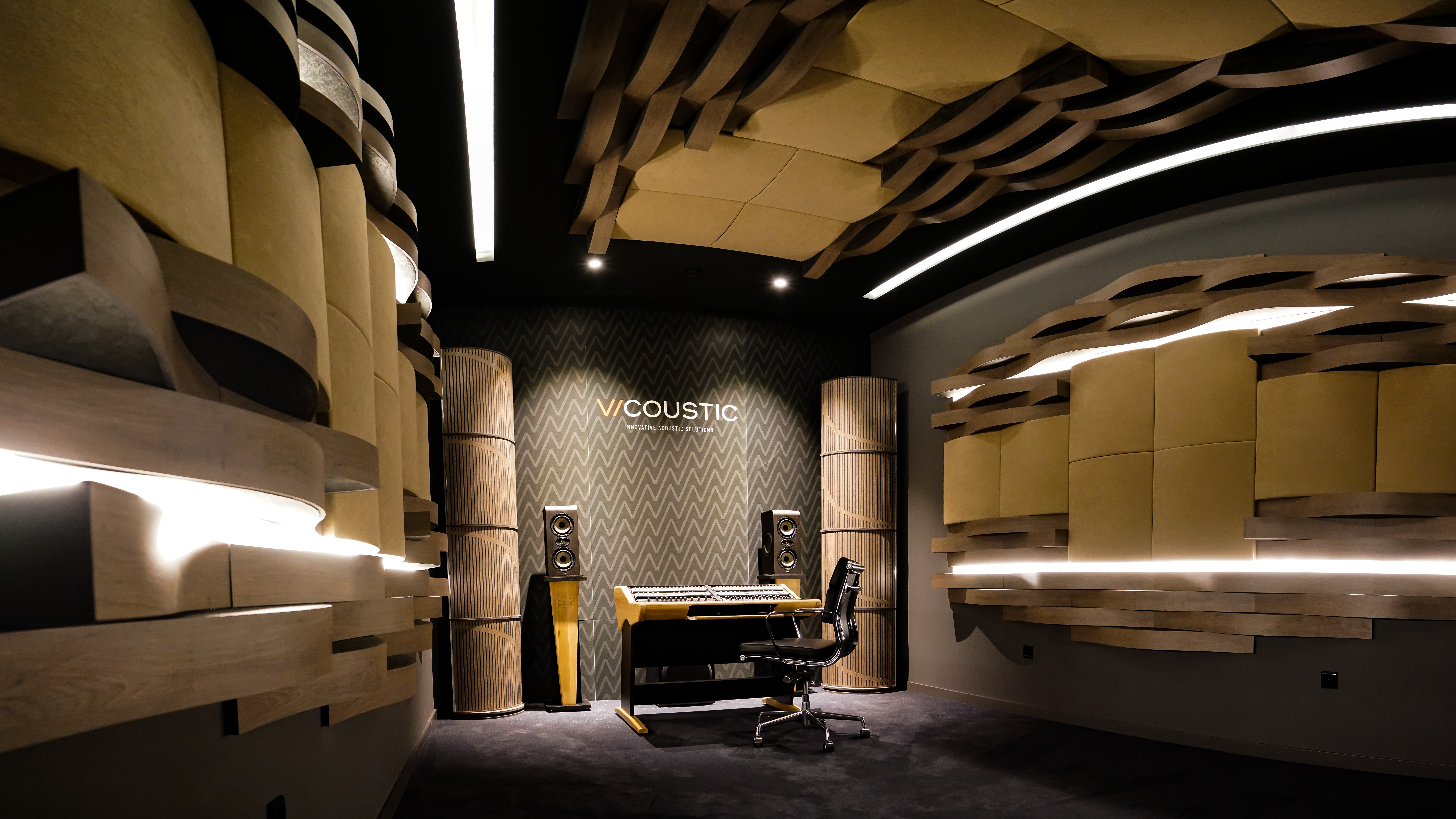Distracting noise harms your mind and body. Here’s how Vicoustic CEO César Carapinha wants to lower the office din—and do it in style.
There’s nothing worse for your stress level and focus than noise—whether it’s the hum of the air conditioning, obnoxious ringtones, traffic, nearby construction or other people’s conversations. In fact, research shows that overhearing conversations—especially one-sided phone conversations—can be more distracting than anything.
Chalk it up to the way we’re wired neurologically: Going back to evolutionary times, our brains alerted us to danger with sound. Our biology hasn’t changed, but our environment has. Studies show that noise arouses the nervous system and causes the release of stress hormones. And while open office environments with tall ceilings are trendy, they can be loud—and as a result, impact productivity.
We talked with César Carapinha, the CEO and founder of Portugal-based Vicoustic about the problem of managing both office noise and how his young firm aims to fix it. In fact, Vicoustic recently earned the Red Dot Award for Product Design, one of the most sought-after seals of quality for design.
How did you get started with Vicoustic?
I’m a mathematician and a huge music buff. Back in 2005, I was looking for acoustic products for my house to soundproof areas that I would play music in. But the only thing I could find on the market was grey and boring. None were suited for a private house or beautiful design. I saw a business opportunity there, and that’s when I started thinking, “What if I created a brand of acoustic products that are more design oriented?” And that’s exactly what happened.
My background gave me the foundation to understand the concepts of acoustics. I spent a year looking for manufacturers of polyurethane and woodwork, hired an acoustician to develop a brand of products according to my vision, and in 2007 started Vicoustic. Now, we’ve got an 84-person team made up of experienced acousticians, and we handle projects in 80 countries.
What makes Vicoustic different?
In addition to performance, we put a high priority on aesthetics, since they have to integrate perfectly into every environment. We want our acoustic treatments to look like art and not like a technical product. My favorite product is the FlexiWave Ultra, which is made of bent wood, with the sides made of an absorption material. Another one I love is the acoustic panel called the Flat Panel VMT that looks like a wall of stone.
We invented and tested the concept of “variable acoustics” at Microsoft’s research labs in Seattle and have since created products that can change the acoustics of a room simply by rotating them. All of our products are 100% recyclable, made of recycled water bottles, and are customizable, washable, anti-allergenic and fire rated. So in general, we can say most of our portfolio comes with innovation and sustainability in mind.
We also consult on a variety of acoustic projects—whether it’s creating the best sound for a home cinema or recording studio or ensuring the best soundproofing for stadiums or offices. In addition, our acoustic lab is one of the most complex and complete in the world, and we use it regularly for research and training.
What’s on the horizon for soundproofing?
All of our clients come to us to solve a common problem—the excess of background noise inside their spaces. This happens because of the large amount of reverberation caused by the reflection of sound waves on rigid surfaces. Too much reverberation causes people to speak louder to make themselves clear, and this causes what we call the “snowball effect,” elevating the general noise levels to become almost unbearable.
Our acoustic absorbers kill the problem. Investing in a silent environment is a good return on investment, because people who are comfortable while working will avoid constant breaks. Ensuring the availability of private spaces at the office is also important. In addition, I’m seeing people pay more attention to music, because it can have such an impact on our emotions. I think more workspaces should be playing music at low levels for this reason.
How do you go about soundproofing a space?
To effectively soundproof a room, we must know how the room is built, including the materials used and the level of soundproofing desired by a client. We then work to develop a custom design and acoustics to mitigate the sound problem.
How has soundproofing changed?
We’ve seen exponential growth in demand for products that are certified to have low VOCs, that are fire-rated, recycled, recyclable and customizable. These kinds of materials will be the future of office acoustics.
What’s next for noise at work?
In the next 10 years, I see a greater need for small acoustic private pods that host up to six people. Noise cancelation and sound masking technologies are already part of our lives and will have a larger impact in the office of the future. If you look 20 years into the future, I think most people will work remotely using some kind of VR headset, and the common spaces will be more for socializing and team building.
